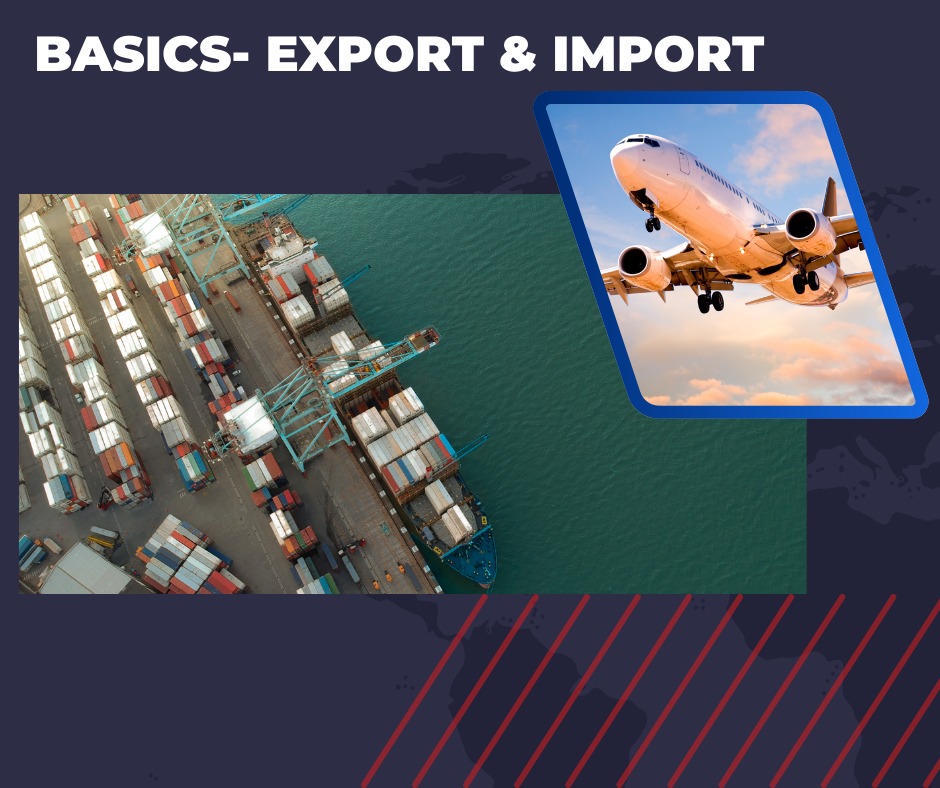
Basics- Export & Import
February 13, 2025 · Admin
In today’s interconnected global economy, businesses are increasingly looking to expand their reach and boost profitability by venturing beyond local markets. One of the most effective ways to achieve this is by engaging in the import and export of goods and services. While the process may appear overwhelming to new entrepreneurs, with the right knowledge and strategies, it can become a key driver of business growth. In this blog, we will explore the import and export process for businesses, breaking it down into clear, actionable steps for those considering international expansion.
There are several reasons why businesses opt to import and export. Some of the most notable benefits include:
- Market Expansion: Exporting enables companies to tap into broader markets, increasing their potential customer base beyond national borders.
- Cost Reduction: Importing allows businesses to source goods at lower costs from countries with competitive pricing or reduced labour costs.
- Diversification: International trade helps businesses diversify their revenue streams and reduces reliance on a single market.
- Increased Brand Recognition: Companies that export gain global visibility, which can enhance brand recognition and bolster their reputation internationally.
Restriction v/s Prohibition
Restriction: We can export but there are certain limits
Prohibition: we can’t export because there are totally banded items.
Some key terms related to Export and Import;
- FTDR-The Foreign Trade Development and Regulation Act 1992.
- BRC- Bank Realisation Certificate- Digital document that confirms an exporter has received payment for export goods.
- SCMTR- Sea Cargo Manifest and Transhipment Regulation- Regulation that aim to improve the transparency and predictability of the movement of goods and to speed up customs clearance process
- EPCG- Export Promotion Capital Goods – It is a scheme that allows exporters to import capital good at a reduced customs duty rate.
- CITES- Convention on International Trade in endangered species of wild fauna & Flora-to prevent the over exploitation of animals and plants.
- SCOMET- Special Chemical organisms, material, equipment and Technologies- it’s an export control list.
| For export of goods from India | For import of goods into India |
| 1. Bill of Lading/ Airway Bill/ Lorry Receipt/ Railway Receipt/ Postal Receipt 2. Commercial Invoice cum Packing List* 3. Shipping Bill/Bill of Export/ Postal Bill of Export |
1. Bill of Lading/Airway Bill/ Lorry Receipt/ Railway Receipt/ Postal Receipt in form CN-22 or CN 23 as the case may be. 2. Commercial Invoice cum Packing List** 3. Bill of Entry |
In case when we are re exporting an item imported then the value of the goods should be higher than the value of Import.
While the import and export process can be intricate, it presents substantial opportunities for businesses looking to expand their reach, reduce costs, and diversify their income sources. By conducting thorough market research, understanding relevant regulations, selecting reliable shipping partners, and fostering strong relationships with international clients, businesses can confidently navigate the global marketplace.
Reference:
https://www.india-briefing.com/news/import-export-procedures-india-19125.html/
Quick Enquiry
To know more about Associated Chemicals feel free to send a message
 Our Sister Concerns
Our Sister Concerns 


Usefull Links
Get In Touch
Assochem Chambers, Bypass, Edapally,
Kochi-682024, Kerala, India.
Phones : +91 9495999349, +91 9388610189, +91 484 2339190, +91 484 2348028
E-mail : nsn@assochem.in, marketing@assochem.in, mail@assochem.in
Support

















